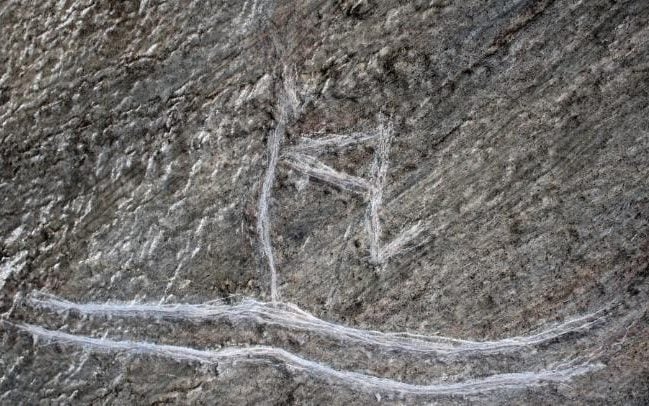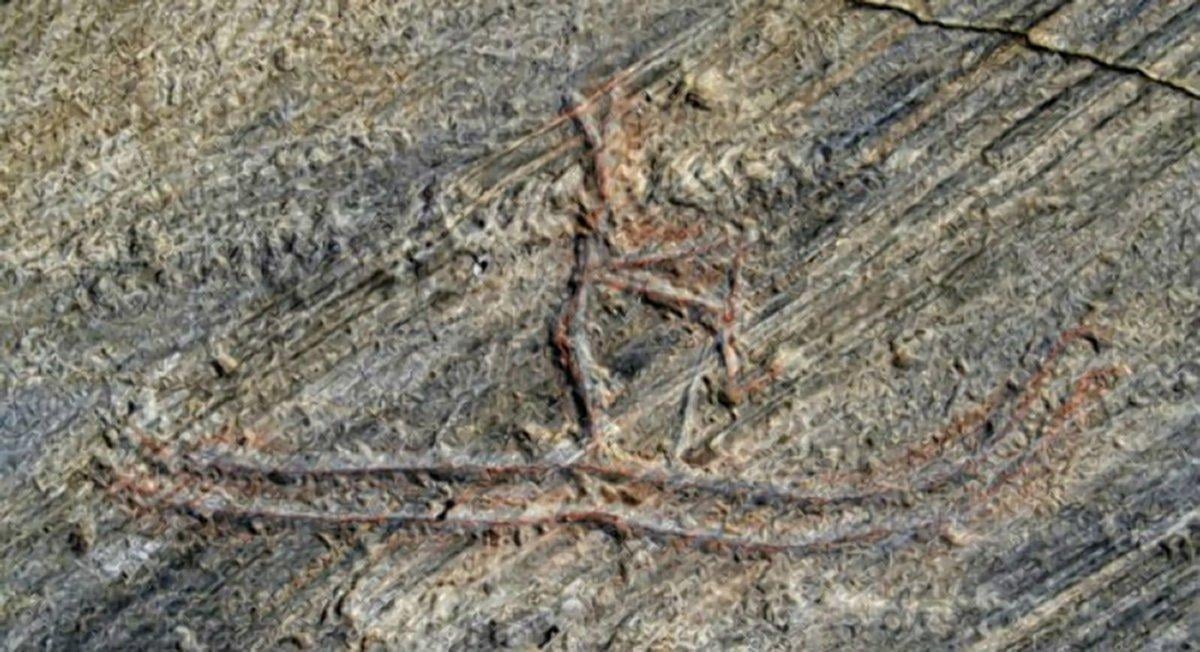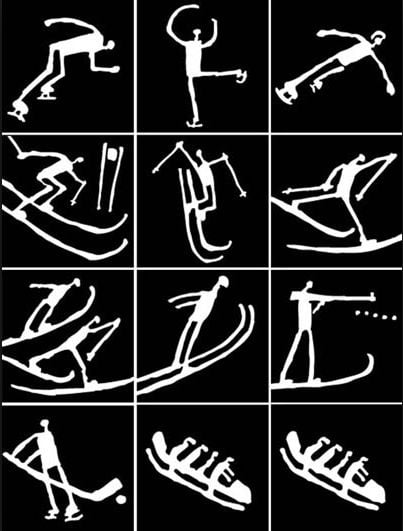Law & Politics
Boys Damage Norway’s Most Famous Stone-Age Artwork Trying to Make It Easier to See
The damage may be "irreversible."

The damage may be "irreversible."

Sarah Cascone

The thing about ancient rock art is that it can be somewhat difficult to make out. With that in mind, two Norwegian boys set out to make their country’s most famous Stone Age work more legible—and nearly destroyed the 5,000-year-old carving in the process.
“It’s a tragedy, because it’s one of the most famous Norwegian historical sites,” said Bård Anders Langø, mayor of the nearby municipality of Alstahaug, to Norway’s the Local.
The carving, which is located on the island of Tro, shows a crudely drawn figure on skis. It is thought to be among the earliest illustrations of the skiing, and was the basis for the pictograms used for each sport during the 1994 Winter Olympics in Lillehammer.

Norway’s most famous ancient rock art, of a man skiing, before it was damaged by well-meaning child vandals. Courtesy of Nordland County.
The perpetrators came forward last week to apologize for their actions after the vandalism was reported to the police as a violation of the Cultural Heritage Act.
The boys, whose names have not been released, also damaged a nearby carving of a whale in their efforts to make the ancient markings more visible. Now, experts are saying the damage could be “irreversible.”

Norway’s most famous ancient rock art, of a man skiing, inspired these logos used for the different sports at the 1994 Lillehammer Winter Olympic Games.
“It’s a sad, sad story,” said Tor-Kristian Storvik, the official archaeologist of Norway’s Nordland County, to the Telegraph. “The new lines are both in and outside where the old marks had been.”
Damage to ancient rock art is not an uncommon occurrence, unfortunately. A group of geology students last summer wrote their names on the site of ancient Native American rock art. In Tasmania, Australia, racially-motivated vandals destroyed Aboriginal hand stencils in June.